Photo management software is a type of computer application that helps users to organize their digital image collection.
One of the biggest culprits of a cluttered hard disk are images taken with a digital camera. This device enable users to take literally hundreds or even thousands of photos storing them on a single small memory device. The photos are then transferred to a computer hard disk for sharing with family and friends, editing, and to print to a photo printer or one of the many online digital photo printing services.
Anyone with a large photo collection will know that cataloging and finding a specific picture can be very time consuming.
TagStudio is a photo and file organization application with an underlying tag-based system that focuses on giving freedom and flexibility to the user. It’s free and open source software.
Installation
We evaluated TagStudio with the Manjaro and Ubuntu distributions.
With Manjaro, Pamac (Manjaro’s front-end installation tool) lets us install TagStudio from the Arch User Repository (AUR).
The AUR is a community-driven repository. It contains package descriptions (PKGBUILDs) that allow users to compile a package from source with makepkg and then install it via the in-house pacman, a lightweight, simple and fast package manager that allows for continuously upgrading the entire system with one command.
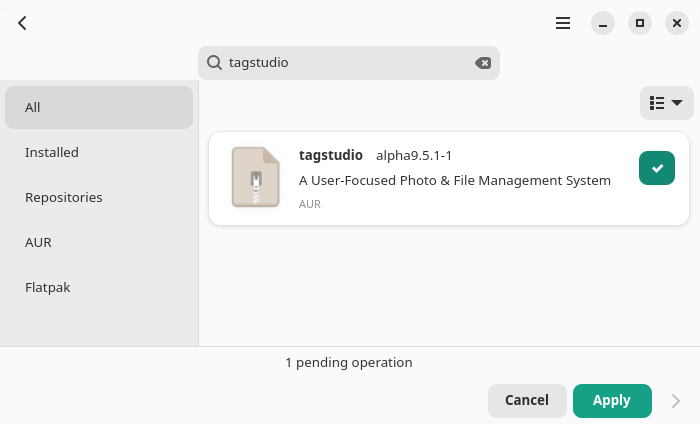
TagStudio has many dependencies. Our test system needs to build 8 Python packages. With Python-based software, the more dependencies there are, the more likely you’ll run into installation issues.
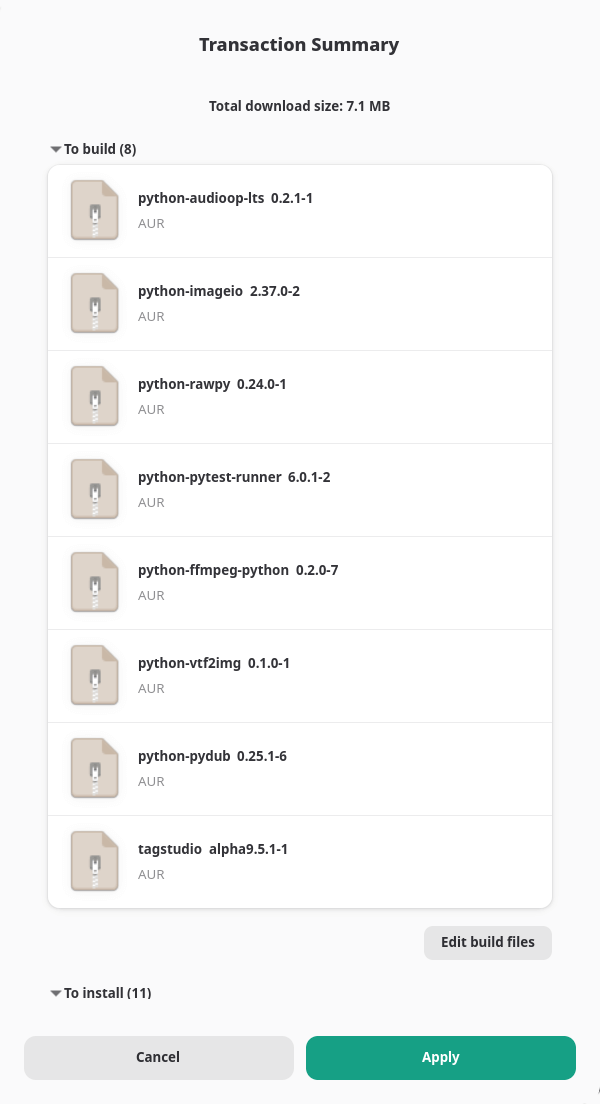
As we anticipated, our initial attempt wasn’t successful. We’re missing a dependency, but that’s actually just an oversight by the AUR maintainer of the package, as the missing dependency (python-hatcling) is present in the Official Repositories.
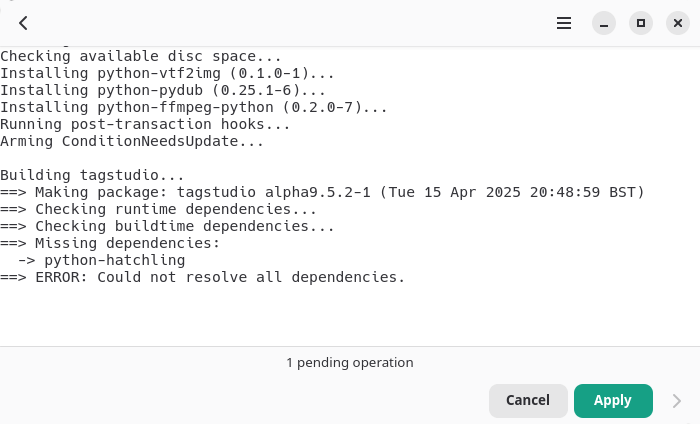
Let’s install the missing dependency.
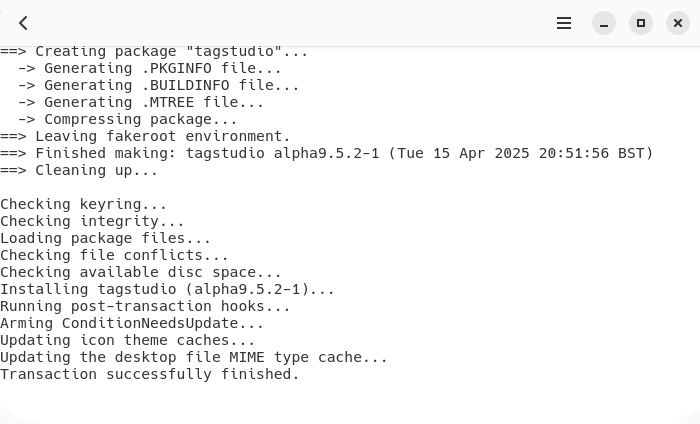
Now the build successfully completes.
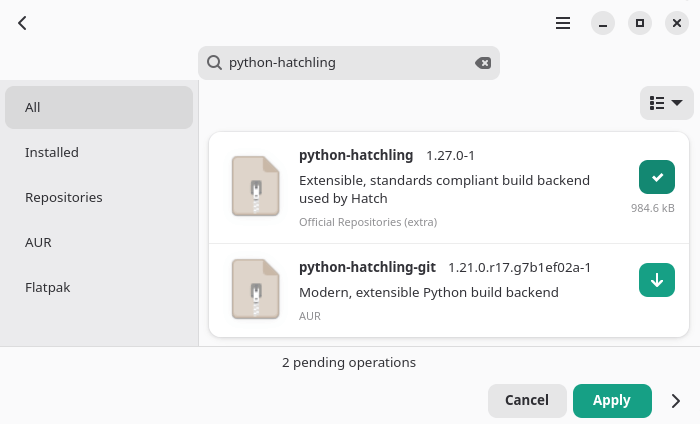
On Ubuntu we installed the software using the tagstudio_linux_x86_64.tar.gz file. With hindsight, we shouldn’t have bothered with the AUR package in Manjaro.
Next page: Page 2 – In Operation and Summary
Pages in this article:
Page 1 – Introduction and Installation
Page 2 – In Operation and Summary
